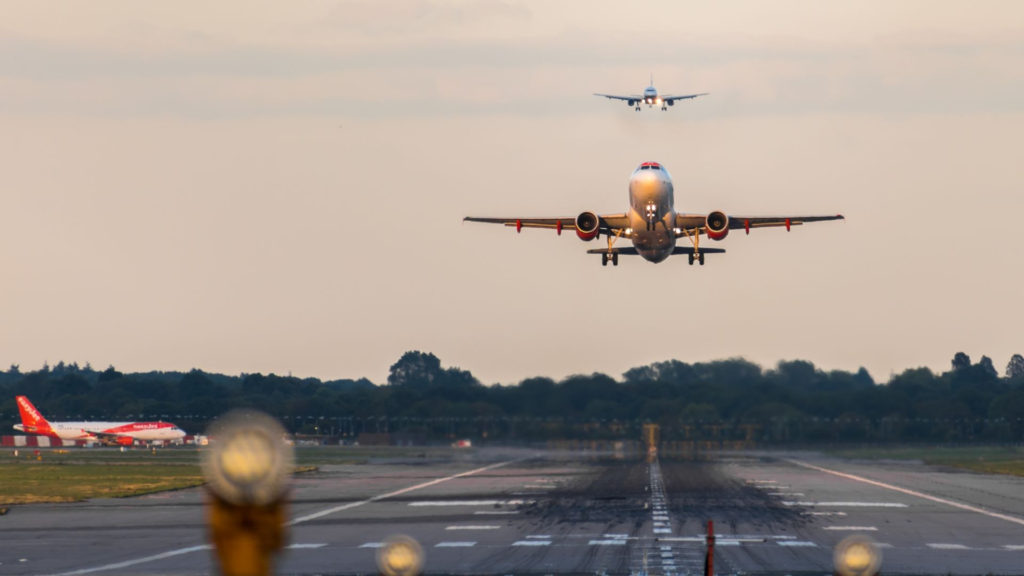The United Kingdom has officially granted London Gatwick Airport (LGW) approval to use its second runway on a regular basis. Normally limited to taxiing operations or as a fallback for the main runway, a plan has been approved to bring this strip into routine use with a series of modifications and conditions.
The implementation of regular flight operations on London Gatwick Airport’s second runway marks part of a wider investment plan, which will see £2.2 billion ($2.97 billion) poured into the facility in order to boost its capacity. A quick turnaround is expected, with the second runway potential set to be in use by 2029.
A Key Milestone
In a statement released yesterday evening, London Gatwick Airport confirmed that it had received government approval to bring its second runway into routine use. This northern strip (08L / 26R) is the shorter of the two currently present at the airport (2,565 meters / 8,415 feet), with its proximity to the longer (3,316 / 10,879 feet) main strip (08R / 26L) preventing the two runways from being used simultaneously.
Now, however, this dream will become reality, following the approval of a £2.2 billion privately-financed investment project at the facility. This, according to the BBC, will see the northern runway moved by 12 meters, and, as pictured above, used to handle smaller departing aircraft. Commenting on this milestone, Stewart Wingate, who serves as VINCI Airports’ Managing Director for the United Kingdom, said that:
“We welcome the Government’s approval of plans to bring our Northern Runway into routine use, ahead of the expected deadline. This is another important gateway in the planning process for this £2.2bn investment, which is fully funded by our shareholders and will unlock significant growth, tourism, and trade benefits for London Gatwick and the UK, and create thousands of jobs.“
The Northern Runway Could Be Operational Within Four Years
Gatwick is not the only London airport that has toyed with the idea of adding another runway to its repertoire in recent years. Indeed, its larger neighbor at Heathrow (LHR) has also long been lobbying for a third landing strip. However, as this would require the new runway to be built outside the boundaries of the airport’s existing footprint, the proposals for this expansion are much more expensive and long-term.
As pictured in the graphic embedded above, Gatwick Airport’s proposal to bring its second runway into regular use would not require the facility to build outside of its current footprint. As well as making the project less expensive, this also means that it could be completed sooner, with a government source saying that “planes could be taking off from a new full runway at Gatwick before the next general election.”
As it stands, the next election is scheduled to be held in 2029. As such, this means that the new strip could be operational within four years, representing a swift turnaround for the proposal. However, Gatwick won’t be rushing the plans, with Wingate noting that “planning conditions [must] enable us to realise the full benefits of the project and not impose unnecessary constraints that make it uneconomic to invest in.”
Passenger & Network Growth On The Horizon
London Gatwick is an infamously congested hub, and, in fact, ranks as the busiest single-runway airport in the whole of Europe. As such, the ability to use its northern strip on a regular basis would provide considerable relief to the busy facility, allowing it to expand its capacity by over 100,000 flights a year.
Indeed, the BBC notes that, as part of Gatwick’s investment plans, it expects to be able to handle 389,000 flights by the late 2030s, which would mark an increase of around 38.93% compared to its current figure of approximately 280,000. In terms of annual passenger numbers, these could rise from 40 to 80 million.
The expansion plans, which would also see Gatwick’s terminals expanded, could also have interesting implications on a network level. Indeed, as noted above, the northern runway will be used for short-haul departures, freeing up space on the main runway for more long-haul flights. As such, this could see Gatwick become a more viable alternative for intercontinental airlines over the slot-controlled Heathrow.


